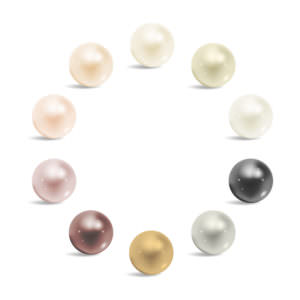
Pearls are one of the most timeless and elegant gemstones in the world—but not all pearls are the same. From luminous Akoya strands to mysterious Tahitian drops, each pearl type carries its own story, look, and value. Whether you’re shopping for a gift, choosing your first piece of pearl jewelry, or simply curious, this guide breaks down all the major types of pearls and what makes each one unique.
Natural pearls form entirely without human intervention, developing spontaneously in the wild when an irritant enters a mollusk. These pearls are incredibly rare and historically prized, with many found in vintage heirlooms or displayed in museums. Due to their scarcity and organic formation, natural pearls often command high prices and exhibit irregular, unique shapes that add to their charm.
Cultured pearls are the result of a carefully controlled farming process. A small bead or piece of tissue is manually inserted into a mollusk to encourage nacre development. While the process is initiated by humans, the pearl formation itself remains a natural biological response. Today, virtually all pearls available on the market are cultured, offering consistency in shape, size, and color—at a much more accessible price than natural pearls. Cultured pearls have made elegant pearl jewelry available to modern shoppers worldwide.
Cultured pearls offers a wide variety of shapes, including round, button, and baroque, catering to different preferences and budgets.
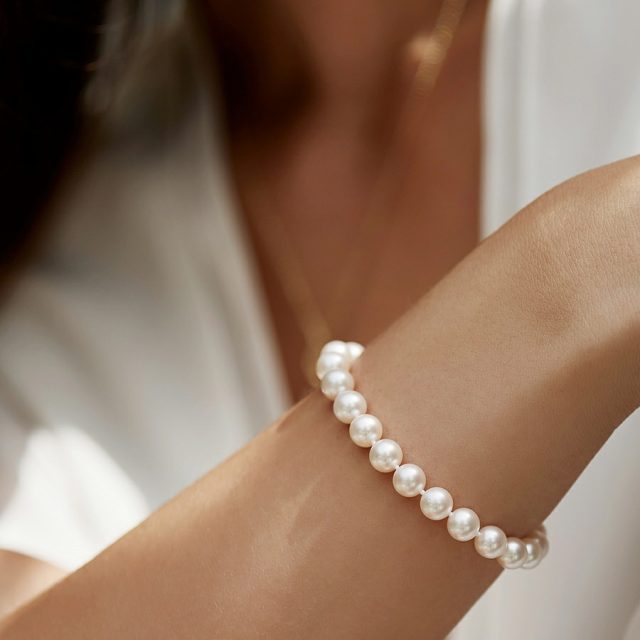
A pearl bracelet can simply elevate any outfit, be it formal or casual. Discover our selection of round and baroque pearls, including the unique luster of Freshwater, Akoya, Tahitian and South Sea pearls.
Explore our various colors such as white, pink, golden, black, blue, and green pearls. Make pearls your signature look! There’s a piece for everyone, including statement gems, dainty pearls in classic or modern designs, and more.
These saltwater pearls are grown in oysters that live in oceans and seas. This category includes three of the most luxurious and well-known pearl types: Akoya, Tahitian, and South Sea pearls. Akoya pearls are produced by Akoya pearl oysters (Pinctada fucata), which are renowned for creating high-quality, round pearls with exceptional lustre. Tahitian pearls are cultivated in a specific species of pearl oyster, the Pinctada margaritifera, which produces large, high-quality saltwater pearls with distinctive colors and iridescent overtones. Black South Sea pearls are a specific variety of Tahitian pearls, celebrated for their alluring colors and mirror-like luster. Saltwater pearls tend to be more consistently round and possess exceptional luster, often described as sharp or mirror-like. Because each oyster typically produces only one pearl at a time and the cultivation process is longer, saltwater pearls are generally more expensive than their freshwater counterparts.
Saltwater pearls are ideal for fine jewelry pieces such as bridal necklaces, heirloom pendants, and sophisticated stud earrings.

Freshwater pearls are cultivated in mussels in rivers and lakes, primarily in China. Unlike saltwater oysters, freshwater mussels can produce multiple pearls at once, which makes them significantly more affordable. These pearls are beloved for their diversity in color, shape, and size—ranging from traditional round forms to baroque, oval, button, and other irregular shapes. Freshwater pearls can also include biwa pearls, which are known for their unique shapes and historical significance from Lake Biwa in Japan. The earliest blister pearls, considered the initial cultivated freshwater pearls in China, date back to the 13th century and mark an important milestone in pearl farming history.
Although their luster is typically softer than that of saltwater pearls, advancements in farming techniques have made top-quality freshwater pearls nearly indistinguishable from Akoya pearls in some cases. Their affordability and versatility make them a favorite for everyday jewelry and personalized gifts.
Each of the five major pearl types has its own signature size, color, and luster. Understanding these differences can help you choose the pearl jewelry that fits your taste, occasion, and budget.
The most valuable pearls are often those with a valuable shape, such as perfectly round pearls, and exceptional luster, making them highly sought after by collectors and jewelry enthusiasts.
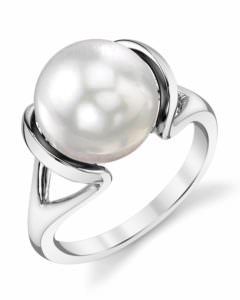
Akoya pearls, also known as cultured Akoya pearls, are the original cultured pearls and are still considered the gold standard for traditional, round white pearls. Japanese Akoya pearls are especially prized for their exceptional luster and perfectly round pearls, reflecting their premium status and traditional cultivation in Japan. These pearls are renowned for their sharp, mirror-like luster and flawless symmetry, a result of the multiple layers of nacre deposited by the mollusk during their formation. The highest quality Japanese Akoya pearls are sometimes referred to as ‘flower pearls’, celebrated for their beauty and rarity. Typically grown in Japan and parts of China and Vietnam, Akoya pearls are most commonly found in classic white with subtle pink or silver overtones.
Their refined appearance makes them the ideal choice for bridal jewelry, graduation gifts, or first pearl purchases. Most Akoya pearls range from 6mm to 9mm in size, and are often strung into uniform necklaces or set in elegant stud earrings.

Akoya pearls are prized for their perfectly round shape and mirror-like luster. Their classic white tone with subtle rose or silver overtones makes them a timeless choice for everyday elegance or special occasions.
Whether worn as a strand, stud earrings, or a simple pendant, Akoya pearls bring refined beauty to any look—and are a favorite among brides, graduates, and anyone building a lasting jewelry collection.
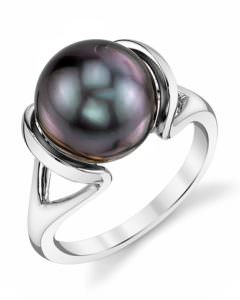
Tahitian pearls are often referred to as “black pearls,” though their hues span a dramatic range of naturally dark shades—like peacock green, charcoal grey, silver, and aubergine. Cultivated in black-lipped oysters in French Polynesia, these pearls exude a unique mystery.
Tahitian pearls are often larger than Akoya or Freshwater pearls, ranging from 8mm to 14mm. Their bold colors and overtones make them perfect for statement jewelry, including chunky necklaces, drop earrings, and even men’s bracelets. Each pearl is one-of-a-kind. Only a small percentage of pearls from each pearl harvest meet the highest quality standards, making top-quality Tahitian pearls rare gems prized by collectors around the world.
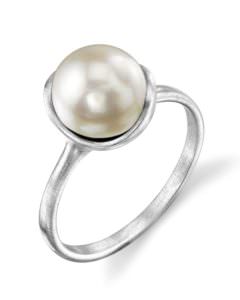
Freshwater pearls are widely loved for their wide range of natural colors—including white, pink, peach, and lavender—as well as their affordability and abundance. Unlike saltwater pearls, which usually form around a bead nucleus, freshwater pearls are typically solid nacre, which can increase durability.
Shapes vary widely, from perfectly round to organically baroque, and they are frequently used in fashion-forward or casual jewelry settings. Freshwater pearls can also include seed pearls, which are tiny pearls valued for their unique shapes and lustre. Freshwater pearls typically range in size from 5mm to 12mm and are an excellent option for creative designs and everyday wear.
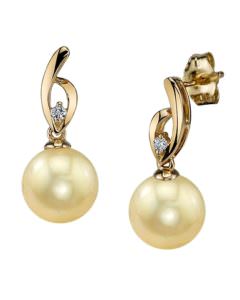
South Sea pearls are among the largest and most luxurious pearls available. Grown in the warm waters of the South Pacific, these pearls come in two main color varieties: white (from silver-lipped oysters) and golden (from gold-lipped oysters). Their thick nacre gives them a deep, satiny luster that’s softer and more diffused than the sharp shine of Akoya pearls. South Sea pearls are often considered traditional pearls, prized for their classic appeal compared to more unusual or specialty varieties.
These pearls are typically found in sizes ranging from 10mm to an impressive 16mm or more. Due to their size, rarity, and stunning appearance, South Sea pearls are often reserved for high-end jewelry and milestone gifts, like anniversary pendants and investment pieces. South Sea pearls are considered some of the most valuable pearls in the world because of their exceptional quality, natural rarity, and premium market value.
Sea of Cortez pearls are some of the rarest and most sustainably produced pearls in the world. Grown in the Gulf of California, these pearls are cultivated in rainbow-lipped oysters and feature a remarkable natural iridescence. Their overtones shimmer with metallic hues of green, blue, and purple—no two pearls are exactly alike.
Because they’re produced by a single eco-conscious farm with limited annual output, Sea of Cortez pearls are treasured by collectors and connoisseurs. The pearl farmer plays a crucial role in cultivating these rare pearls, using sustainable practices to ensure both quality and environmental responsibility. Most pearls range from 8mm to 12mm and are often showcased in minimalist settings to highlight their unique colors and natural shapes.
| Pearl Type | Origin | Size | Common Colors | Price Range | Luster |
|---|---|---|---|---|---|
| Akoya | Japan, China | 6–9mm | White, cream, pink | $$$ | High, mirror-like |
| Freshwater | China | 5–12mm | Pink, lavender, white | $ – $$ | Medium to high |
| Tahitian | French Polynesia | 8–14mm | Black, green, peacock | $$$$ | Medium to high |
| South Sea | Australia, Philippines | 10–16mm | White, golden | $$$$$ | High, satiny |
| Sea of Cortez | Mexico | 8–12mm | Multicolor | $$$$$ | Iridescent, strong |
Each of these pearl types is beautiful in its own way, and you can’t go wrong choosing any of them. You might want to buy a classic Akoya pearl necklace or a unique Tahitian pearl bracelet. You’ll just need to consider your personal style and which pearl variety best fits you. Whichever type of pearl you choose, we’re confident you’ll love your new pearl jewelry.
Specialty pearls are the crown jewels of the pearl industry, celebrated for their extraordinary shapes, colors, and rarity. These unique gems—such as baroque pearls, coin pearls, and keshi pearls—stand apart from traditional round pearls, captivating collectors and jewelry designers alike. Tahitian pearls and south sea pearls are also considered specialty pearls, renowned for their impressive size and mesmerizing hues, from the deep peacock green of Tahitian pearls to the golden hues of south sea varieties.
Each specialty pearl is a testament to nature’s artistry, making them highly sought after as precious gems. Whether showcased in a statement necklace or a one-of-a-kind ring, these pearls embody natural beauty and add a distinctive flair to any jewelry collection.

Looking for something less traditional but full of personality? Baroque pearls are loved for their organic, one-of-a-kind shapes and luminous texture. No two are exactly alike, making them perfect for modern, artistic styles.
From bold drop earrings to sculptural necklaces, baroque pearls bring a touch of effortless elegance to both casual and elevated looks.
Among the most coveted treasures in the world of pearls are those that are truly unique or extremely rare. Natural pearls, formed without any human intervention, are among the rarest and most valuable gems, often fetching record prices at auction. Cultured pearls can also achieve rarity when they display exceptional qualities—such as perfectly round shapes, intense luster, or vibrant, unusual colors.
The value of a specialty pearl is often determined by its pearl type and pearl shape, with round pearls and perfectly round specimens commanding the highest prices. Unlike saltwater cultured pearls, freshwater cultured pearls can be found in a dazzling array of shapes and colors, including whimsical baroque pearls and striking coin pearls. These rare varieties are often reserved for exclusive jewelry pieces, making them a favorite among discerning collectors and those seeking something truly special.
Choosing the right pearl isn’t just about size or color—it’s about the story you want your jewelry to tell. Each type of pearl suits different lifestyles, budgets, and occasions. Pearl shapes also play a significant role in the selection process, with options ranging from classic rounds to unique forms like mabe pearls and blister pearls, each offering distinctive appeal for those seeking something special.
The five main types are Akoya, Freshwater, Tahitian, South Sea, and Sea of Cortez pearls.
Saltwater pearls come from oysters in oceans and are often round with high luster. Freshwater pearls come from mussels in lakes and rivers and offer more shape and color variety.
South Sea pearls, especially golden ones, are typically the most valuable due to their size, rarity, and luster.
Baroque pearls are irregularly shaped pearls known for their unique, organic forms and artistic appeal.
Freshwater pearls are durable, versatile, and affordable—ideal for daily use.
White pearls are the most classic and popular, but pink, black, and golden pearls are also highly sought after.
Understanding the differences between pearl types can help you make more confident and informed choices—whether you’re learning for personal interest, shopping for a special occasion, or exploring pearl jewelry for the first time. From the refined beauty of Akoya to the bold tones of Tahitian and the natural variety of Freshwater pearls, each type offers something unique in terms of origin, appearance, and value.
With this foundation, you’re better equipped to recognize the characteristics that matter most to you and appreciate the craftsmanship behind every pearl.
Signup now and receive an email once I publish new content.